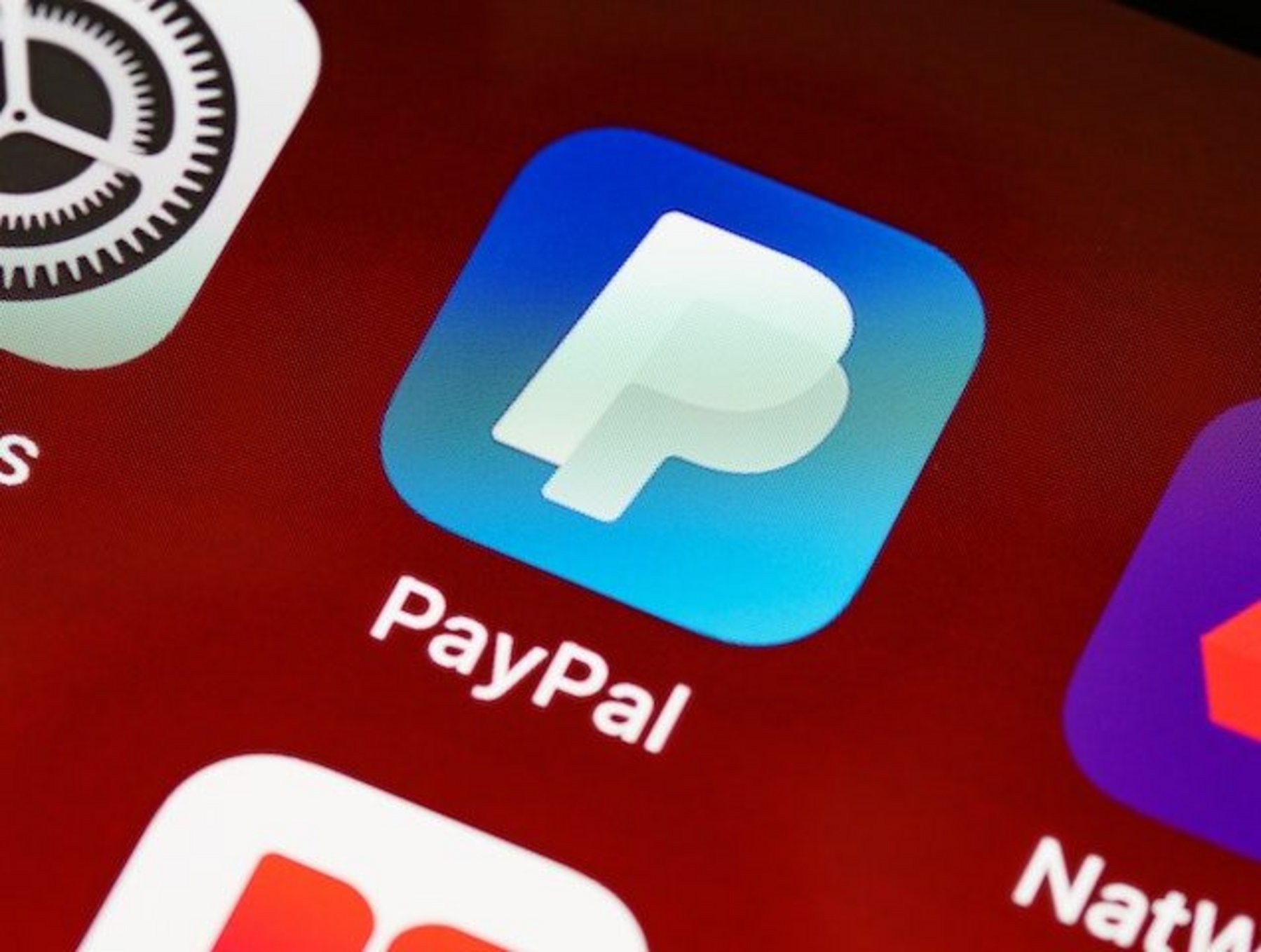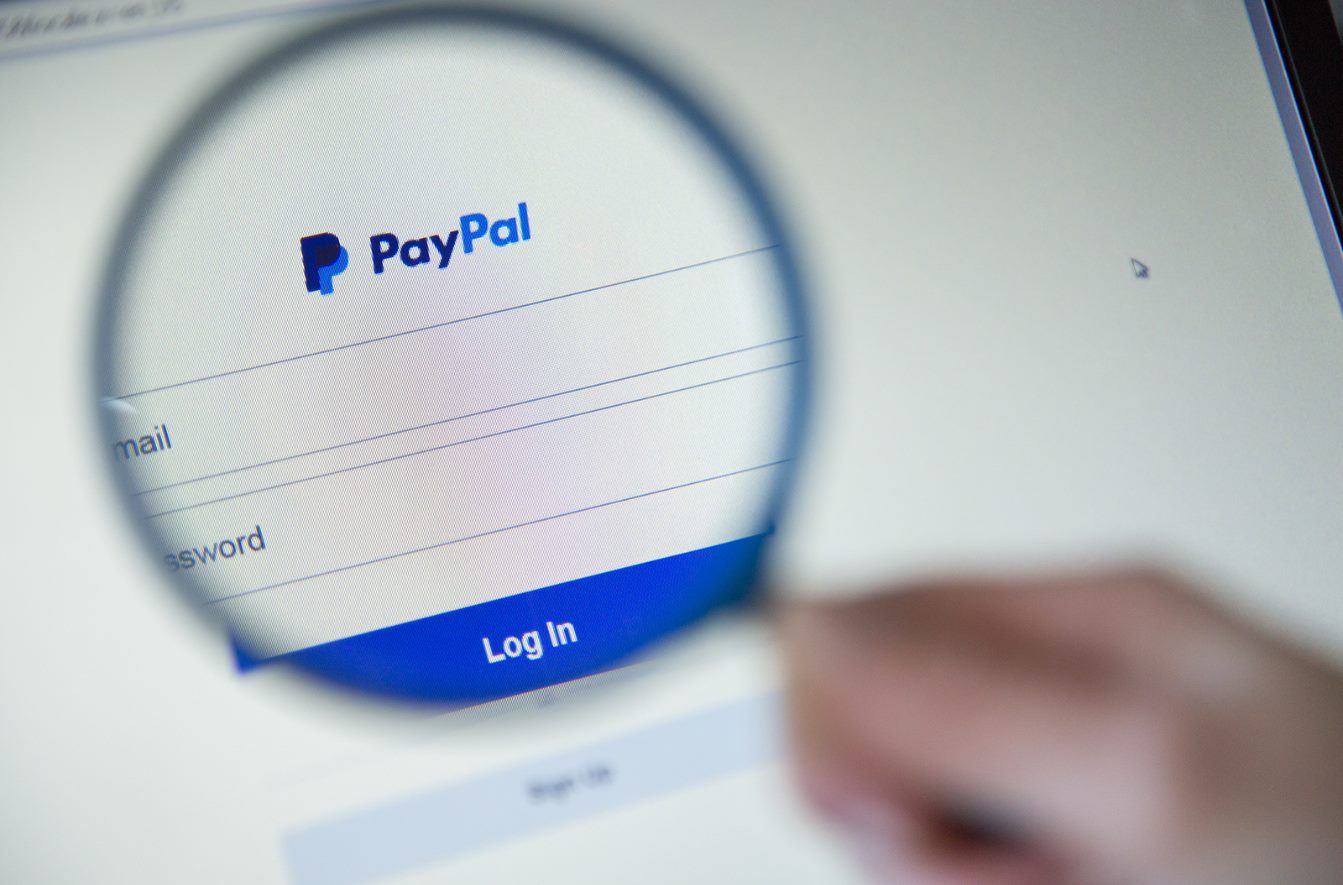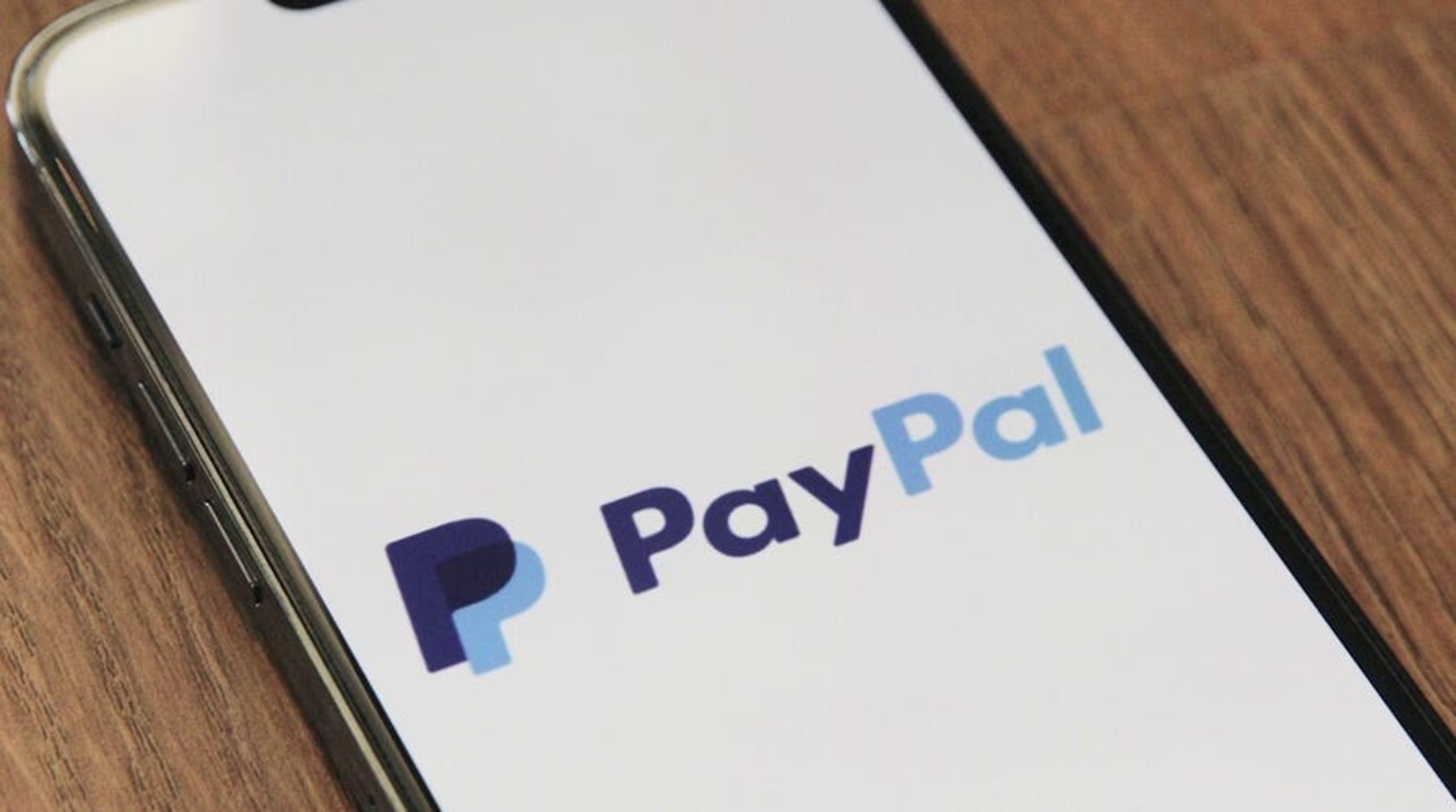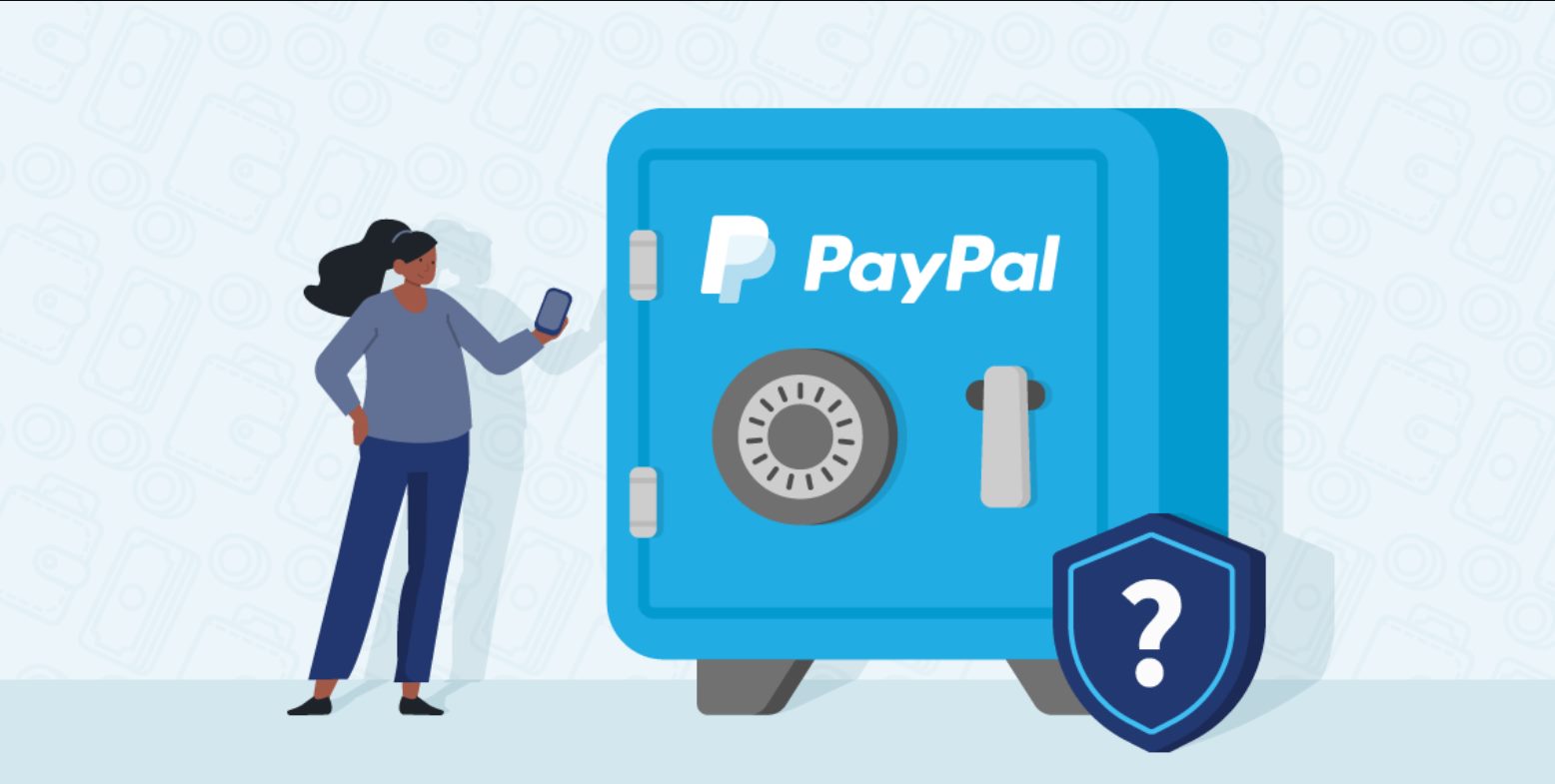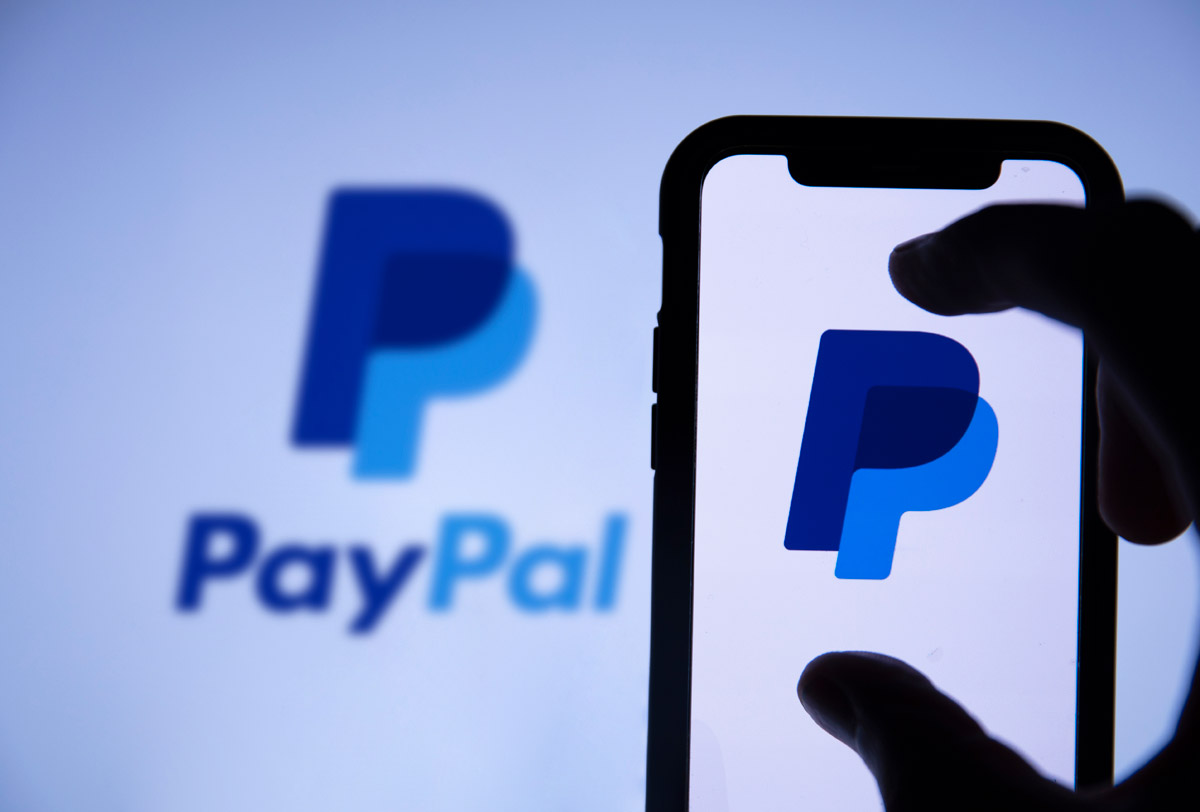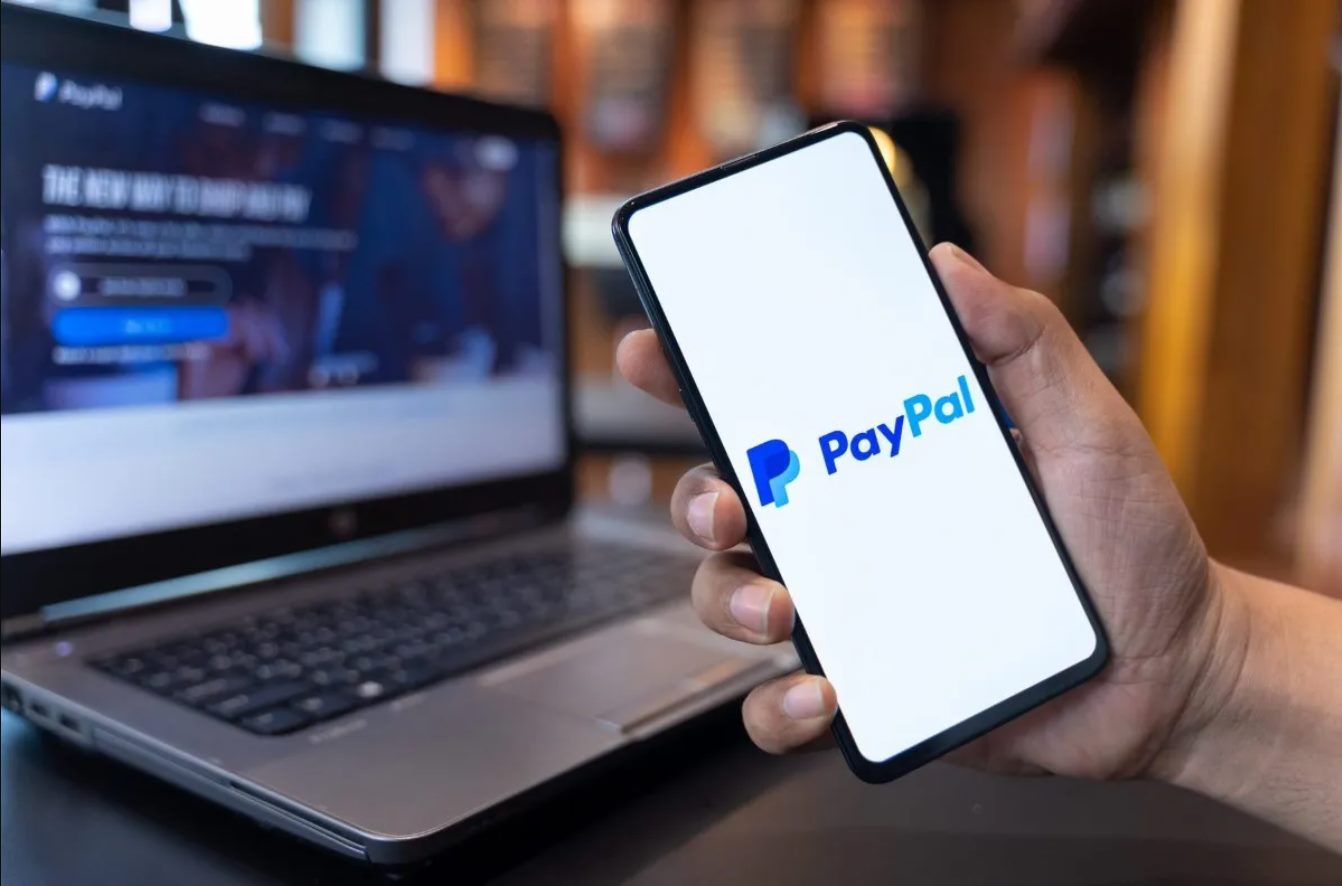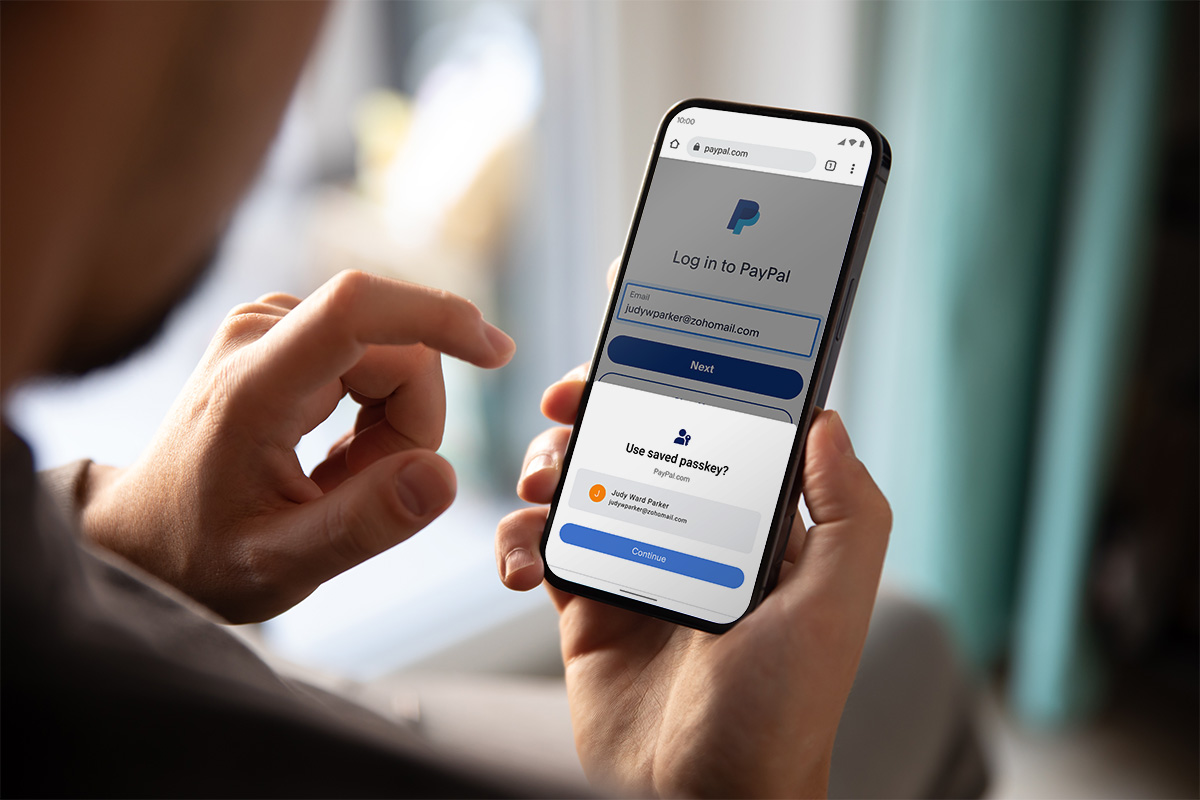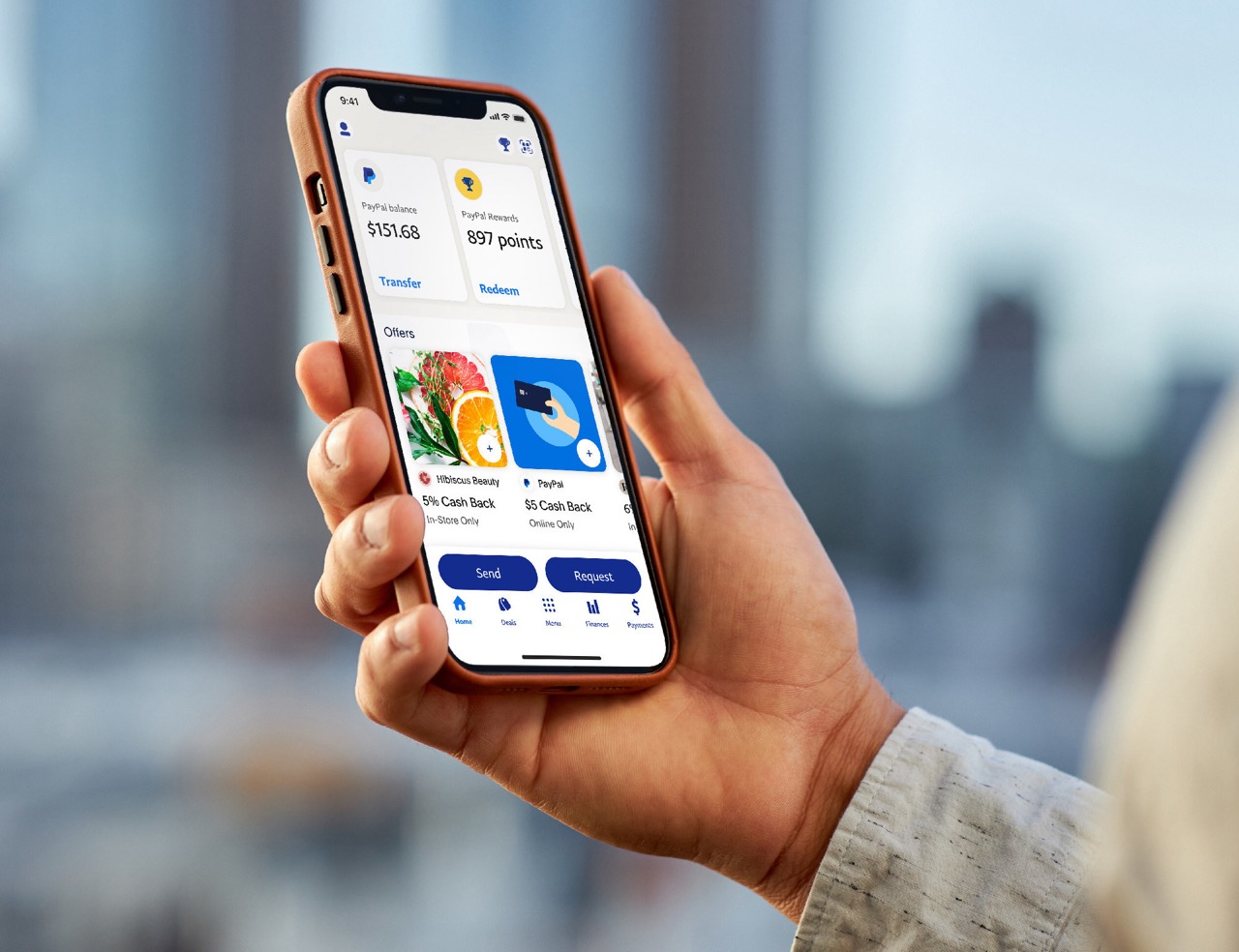Introduction
PayPal is a widely used online payment system that offers a convenient and secure way to send and receive money globally. With millions of users across the globe, PayPal has become the go-to platform for online transactions. However, with its popularity comes the risk of scams and fraudulent activities. It is important to be aware of potential scams and take necessary precautions to protect yourself and your money.
In this article, we will discuss various steps and measures you can take to avoid scams on PayPal. By understanding how PayPal works, recognizing phishing emails, verifying email addresses, and being cautious when sharing sensitive information, you can significantly reduce the risk of falling victim to fraud.
It is important to note that while these tips will help safeguard your PayPal account, they also apply to other online platforms and financial transactions. By adopting these practices, you can enhance your overall online security and protect yourself from potential scams.
Now, let’s dive into the details and explore how you can stay safe while using PayPal.
Understand How PayPal Works
Before using PayPal and engaging in online transactions, it is essential to have a clear understanding of how the platform works. This knowledge will help you better navigate the system and identify any suspicious or fraudulent activities.
PayPal works as a digital wallet, allowing you to link your bank account, debit, or credit card to your PayPal account. Once linked, you can use PayPal to make purchases online, transfer money to other PayPal users, and receive funds from others.
It is important to note that PayPal acts as an intermediary between buyers and sellers, providing an added layer of security for both parties. When you make a purchase, PayPal encrypts your financial information, protecting it from potential hackers or scammers.
When using PayPal for online transactions, it is important to use the “Goods and Services” option when sending money. This ensures that you have buyer protection in case of any issues with the transaction.
Additionally, remember that PayPal will never ask you for sensitive information through email or direct messages. If you receive a request for your password, social security number, or other personal details, it is likely a scam.
By understanding the basic workings of PayPal, you can make informed decisions and identify any red flags or suspicious activities. This knowledge will be instrumental in protecting yourself from potential scams.
Beware of Phishing Emails
One of the most common ways scammers try to steal personal information and login credentials is through phishing emails. Phishing emails are designed to trick recipients into providing their sensitive information by imitating legitimate companies or organizations.
When it comes to PayPal, it is crucial to be vigilant and skeptical of any email that asks you to provide personal information or click on suspicious links. PayPal will never ask you to confirm your account details, password, or billing information through email.
To spot phishing emails, look out for the following signs:
- Misspelled or poorly written email subject lines and content.
- Emails from unusual email addresses or domains.
- Generic greetings like “Dear Customer” instead of addressing you by name.
- Urgent requests to take immediate action, such as confirming your account or updating your information.
- Links that direct you to websites that look similar to PayPal but have slight variations in the URL.
If you receive an email that you suspect to be a phishing attempt, do not click on any links or provide any personal information. Mark the email as spam or phishing and delete it from your inbox.
To stay safe, it is always recommended to access PayPal directly by typing the official website URL into your browser or using a trusted bookmark. This way, you can be confident that you are accessing the authentic PayPal website and not falling victim to phishing attempts.
By being cautious and vigilant regarding phishing emails, you can protect your PayPal account and personal information from falling into the wrong hands.
Verify the Sender’s Email Address
When it comes to email scams, scammers often try to impersonate legitimate organizations, including PayPal. They may use email addresses that look similar to the official PayPal email address in an attempt to deceive recipients.
One way to protect yourself from phishing attempts is to verify the sender’s email address. Legitimate emails from PayPal will always come from an official PayPal domain, such as “@paypal.com” or “@e.paypal.com.”
To check the sender’s email address, you can hover your mouse over the sender’s name or email address, and most email clients will display the full email address. Ensure that the domain matches the official PayPal domain.
If you receive an email from an address that appears to be PayPal but is suspicious, do not click on any links or provide any personal information. Instead, forward the email to PayPal’s official customer support email address (as found on their website) and wait for their response. PayPal’s support team will be able to verify if the email is legitimate or a scam.
It is important to note that scammers can sometimes forge email addresses to make them appear as though they come from PayPal. Therefore, verifying the email address should only be one step in your overall evaluation of the email’s legitimacy.
By taking the extra time to verify the sender’s email address, you can significantly reduce the risk of falling for phishing attempts and protect your PayPal account from unauthorized access.
Log In Only On PayPal’s Official Website
To ensure the security of your PayPal account, it is crucial to log in only on the official PayPal website. Scammers often create fake websites that closely resemble the PayPal login page, with the intention of stealing your login credentials.
To identify the official PayPal website, look for the following indicators:
- Verify that the URL starts with “https://” instead of “http://”. The “s” indicates that the website is secure and encrypted.
- Check for the padlock icon in the browser’s address bar, indicating a secure connection.
- Ensure that the domain is correct. The official PayPal domain is “paypal.com”. Be cautious of domains that have slight variations or extra words added.
If you receive an email or message with a link to log in to PayPal, do not click on it. Instead, manually type “https://www.paypal.com” into your browser’s address bar or use a trusted bookmark to access the official website.
Remember that PayPal will never ask you to log in or provide personal information through a link in an email or message. These are often phishing attempts trying to steal your login credentials. Always be cautious and access PayPal directly through their official website.
If you suspect that you have accessed a fake PayPal website or inadvertently shared your login information on a suspicious website, immediately change your PayPal password and monitor your account for any unauthorized activity. Contact PayPal’s customer support for further assistance and report the incident.
By logging in only on the official PayPal website, you can significantly reduce the risk of falling victim to phishing attempts and safeguard your account and personal information.
Learn to Recognize Fake PayPal Websites
Scammers are becoming increasingly sophisticated in creating fake PayPal websites that closely mimic the appearance and functionality of the official PayPal site. It is crucial to learn how to recognize these fraudulent websites to protect yourself from falling victim to scams.
Here are some key indicators to help you identify fake PayPal websites:
- URL variations: Carefully check the URL of the website you are on. Scammers may use URLs that look similar to the official PayPal website but contain slight differences, such as misspellings or additional words.
- Poor design and layout: Fake PayPal websites often have a lower quality design compared to the official website. Look for inconsistencies in font styles, colors, or logos.
- No secure connection: Official PayPal websites always use a secure connection, indicated by “https://” at the beginning of the URL and a padlock icon in the browser’s address bar. If you see “http://” or no padlock, it is likely a fake website.
- Missing or altered elements: Pay attention to missing functionalities or altered elements on the website, such as broken links, non-functioning buttons, or a modified PayPal logo.
- Request for unnecessary information: Be wary if the website asks for unnecessary personal information that PayPal does not typically require, such as your social security number or other sensitive details.
If you suspect that you have landed on a fake PayPal website, do not enter any personal information or log in to your account. Close the website immediately and report it to PayPal through their official channels.
Remember, PayPal will never contact you via email or other means to ask for your login credentials or personal information. They will also never ask you to confirm transactions or provide sensitive details outside of the official PayPal website.
By being vigilant and learning to recognize the signs of fake PayPal websites, you can protect yourself from scams and safeguard your financial and personal information.
Use Two-Factor Authentication
To add an extra layer of security to your PayPal account, it is highly recommended to enable two-factor authentication (2FA). Two-factor authentication requires users to provide an additional form of verification, usually a unique code or biometric data, in addition to their password.
By enabling 2FA on your PayPal account, even if someone manages to obtain your password, they will still need the additional verification to log in. This significantly reduces the risk of unauthorized access.
PayPal offers multiple options for two-factor authentication, including:
- Text message (SMS) verification: PayPal can send a unique code to your mobile phone that you need to enter during the login process.
- Authenticator app: You can use authentication apps such as Google Authenticator or Authy to generate time-based verification codes.
- Biometric authentication: If your device supports it, you can use fingerprint or facial recognition as an additional verification method.
To enable two-factor authentication on your PayPal account, go to the Security section in your account settings. Follow the instructions to set up your preferred method of 2FA.
It is important to note that you may need to use backup verification methods, such as security questions or backup codes, in case you do not have access to your primary verification method.
By using two-factor authentication, you add an extra layer of protection to your PayPal account, making it significantly more difficult for scammers and unauthorized individuals to access your account and funds.
Avoid Sharing Sensitive Information
One of the most crucial steps you can take to protect your PayPal account is to avoid sharing sensitive information with anyone. Scammers often try to trick individuals into providing their personal and financial details with the intention of accessing their accounts or stealing their identity.
Here are some guidelines to help you avoid sharing sensitive information:
- Never share your PayPal login credentials, including your username and password, with anyone. PayPal will never ask you to provide this information through email, phone calls, or text messages.
- Avoid sharing personal information, such as your social security number, date of birth, or full address, unless necessary and on secure platforms.
- Be cautious when providing payment information, such as your credit card or bank account details. Only provide this information on secure websites and to trusted merchants.
- Do not share your PayPal account information with third-party services claiming to offer benefits or bonuses. These can be scams attempting to gain access to your account.
- Be cautious when asked to verify your identity over the phone. Scammers may impersonate PayPal representatives and ask for sensitive details under the guise of security measures.
Remember, PayPal will always have your basic account information and will not need to ask for it repeatedly.
If you receive any requests for sensitive information that seem suspicious, contact PayPal directly through their official customer support channels to verify the legitimacy of the request.
By being diligent and cautious about sharing sensitive information, you can significantly reduce the risk of falling victim to scams and protect your PayPal account from unauthorized access.
Be Cautious When Selling or Buying Online
When using PayPal for online transactions, whether you are selling or buying goods or services, it is essential to exercise caution and follow best practices to ensure a safe and secure experience.
Here are some tips to help you stay safe when selling or buying online:
- Research the buyer or seller: Before engaging in a transaction, take the time to research the buyer or seller. Check their reputation, reviews, and feedback from previous transactions. Look for any red flags or negative experiences reported by other users.
- Communicate within the platform: Use the messaging system provided by the online platform or PayPal’s messaging feature to communicate with the other party. Avoid sharing personal contact information until you are confident in the legitimacy of the buyer or seller.
- Use verified platforms: Ideally, conduct your transactions through reputable and verified online platforms. These platforms often have built-in protections and dispute resolution mechanisms to help resolve any issues that may arise.
- Insist on secure payment methods: When selling, it is recommended to request payment through PayPal’s “Goods and Services” option. This provides both buyer and seller protection and helps ensure a secure transaction.
- Check for payment confirmation: As a seller, always verify that payment has been received and confirmed in your PayPal account before shipping any goods or providing services. Do not be swayed by payment confirmation emails that appear to be from PayPal unless they are also confirmed within your account.
- Be cautious of overpayment scams: Watch out for buyers who offer to pay more than the agreed price and ask you to send the excess funds back to them. These are often scams, and the initial payment they sent may be fraudulent.
- Trust your instincts: If something feels off or too good to be true, trust your instincts. If a buyer or seller is pushing you to bypass PayPal’s secure payment system or engaging in suspicious behavior, it is safer to walk away from the transaction.
By being cautious and following these guidelines, you can minimize the risk of encountering fraudulent buyers or sellers and have a more secure experience when using PayPal for online transactions.
Use PayPal Buyer and Seller Protection
One of the key advantages of using PayPal for online transactions is the availability of buyer and seller protection programs. These programs are designed to offer added security and peace of mind when buying or selling goods and services through PayPal.
Here’s how you can benefit from PayPal’s buyer and seller protections:
- Buyer Protection: As a buyer, PayPal’s Buyer Protection program can help safeguard your purchases. If you do not receive the item you ordered or receive an item that is significantly different from the seller’s description, you can file a dispute through PayPal’s Resolution Center. PayPal will review the case and, if eligible, may provide a refund for the full purchase price, including shipping costs.
- Seller Protection: As a seller, PayPal’s Seller Protection program provides coverage for eligible transactions. This protection helps guard against unauthorized payments and claims of items not received. To be eligible, ensure that you ship the item to the address provided by PayPal and meet all the requirements outlined in the Seller Protection policy.
- Transaction Monitoring: PayPal also has advanced fraud detection and monitoring systems in place to help identify and prevent fraudulent transactions. These systems work in the background to analyze transactions and flag any suspicious activities, providing an additional layer of protection for both buyers and sellers.
It is important to note that certain conditions and requirements apply to both buyer and seller protection programs. Familiarize yourself with the specific terms and conditions provided by PayPal to ensure that your transactions are eligible for protection.
If you encounter any issues or suspect fraudulent activity, promptly report the problem to PayPal’s customer support. Be prepared to provide any relevant documentation, such as communication with the other party, proof of shipment, or receipts.
By utilizing PayPal’s buyer and seller protection programs, you can have added confidence in your online transactions and mitigate the risks associated with fraudulent activities.
Regularly Check Your PayPal Account
To maintain the security of your PayPal account, it is crucial to regularly monitor and review your account activity. By actively checking your account, you can quickly identify any suspicious transactions or unauthorized activities, allowing you to take immediate action to protect yourself.
Here are some important practices to adopt when checking your PayPal account:
- Review Transaction History: Log in to your PayPal account regularly and review your transaction history. Look for any unfamiliar transactions or payments that you do not recognize. If you notice any unauthorized activity, report it to PayPal immediately.
- Set Up Account Notifications: Take advantage of PayPal’s account notification features to receive alerts for various activities. You can set up notifications for receiving and sending money, balance changes, and password or account changes. These notifications can help you stay aware of any unusual account activity.
- Monitor Linked Bank Accounts and Cards: If you have linked your bank accounts or cards to your PayPal account, regularly check those accounts as well. Look for any unexpected or unauthorized transactions and report any suspicious activity immediately to your bank or card issuer.
- Enable Email Notifications: Configure your PayPal account to send you email notifications for important account activities such as password changes, email changes, or new devices used to log in. This will help you stay informed about any modifications made to your account.
- Keep Contact Information Updated: It is important to keep your contact information, such as your email address and phone number, up to date in your PayPal account. This ensures that you receive important notifications from PayPal regarding your account activity.
By regularly checking your PayPal account and staying vigilant about your transaction history and account activity, you can quickly detect any unauthorized access or fraudulent transactions. Early detection allows you to take immediate action, such as reporting the issue to PayPal and changing your login credentials, to protect your account and funds.
Check for Unauthorized Transactions
Regularly reviewing your PayPal account for unauthorized transactions is an essential step in safeguarding your finances and account security. By promptly identifying and reporting any unauthorized activity, you can take appropriate action to protect your funds and prevent further damage.
Here are some key tips for checking for unauthorized transactions on your PayPal account:
- Review Transaction History: Log in to your PayPal account frequently and carefully review your transaction history. Look for any transactions that you do not recognize or did not make. Pay attention to the transaction amounts, dates, and the names of the individuals or businesses involved.
- Check Incoming and Outgoing Payments: Review both incoming and outgoing payments to ensure that they align with your expectations. Be particularly watchful for any unexpected funds coming into your account or irregular payments going out.
- Investigate Small or Unusual Transactions: Fraudsters may initiate small transactions to test the waters before attempting larger unauthorized transactions. Take a closer look at all transactions, especially ones of small amounts or those from unfamiliar sources.
- Monitor Automatic Payments: If you have set up any recurring payments, such as subscriptions or monthly dues, verify that all the automatic payments are legitimate. Cancel any subscriptions or recurring payments that you no longer use or recognize.
- Report Unauthorized Transactions: If you identify any unauthorized transactions, report them to PayPal immediately. Contact PayPal’s customer support through their official channels and provide them with the necessary details, including transaction IDs, dates, and amounts. PayPal has a dedicated team to assist with resolving unauthorized transaction claims.
It’s important to act swiftly when you notice any unauthorized transactions on your PayPal account. PayPal’s fraud protection measures and policies can help you recover funds and mitigate further unauthorized activities, but prompt reporting is crucial.
In addition to checking your PayPal account, also keep an eye on notifications from your linked bank accounts and cards. If you notice any discrepancies or suspicious transactions, contact your financial institution immediately.
By regularly reviewing your PayPal account for unauthorized transactions and taking immediate action, you can protect your funds and maintain the security of your account.
Keep Your Device and Account Secure
Maintaining the security of both your device and your PayPal account is crucial in protecting your sensitive information and preventing unauthorized access. By following essential security measures and implementing best practices, you can greatly reduce the risk of falling victim to scams or data breaches.
Here are some key steps to keep your device and PayPal account secure:
- Use Strong, Unique Passwords: Ensure that you have a strong, unique password for your PayPal account. Avoid using easily guessable passwords or reusing passwords across multiple accounts. Consider using a password manager to generate and securely store your passwords.
- Enable Biometric Authentication: Take advantage of your device’s biometric authentication features like fingerprint or facial recognition. This adds an extra layer of security to access your device and your PayPal account.
- Regularly Update Your Device and Apps: Keep your device’s operating system, web browsers, and apps up to date. Software updates often include security patches that address vulnerabilities, improving the overall security of your device.
- Be Cautious of Public Wi-Fi: Avoid accessing your PayPal account or performing sensitive transactions while connected to public Wi-Fi networks. Public Wi-Fi networks can be insecure, making it easier for hackers to intercept your data. Use a secure and trusted network when accessing your account.
- Enable Account Alerts and Notifications: Configure your PayPal account to receive account alerts and notifications. This way, you can be promptly notified of any suspicious account activity or unauthorized logins.
- Use Anti-Malware Software: Install reputable anti-malware software on your device to detect and prevent malware infections that can compromise your account’s security. Keep the software updated and run regular scans to ensure ongoing protection.
- Be Wary of Untrusted Apps and Links: Avoid downloading apps or clicking on links from unknown sources. Malicious apps or phishing links can compromise your device’s security and potentially lead to unauthorized access to your PayPal account.
- Regularly Review App Permissions: Periodically review and manage the permissions granted to apps on your device. Only provide necessary permissions and be cautious of apps that request excessive access to your personal information.
By incorporating these security measures into your routine, you can significantly enhance the protection of your device and PayPal account, reducing the risk of unauthorized access and potential security breaches.
Conclusion
Protecting yourself from scams and fraudulent activities is of utmost importance when using PayPal or any online payment system. By understanding how PayPal works, recognizing phishing emails, verifying email addresses, and logging in only on the official PayPal website, you can significantly reduce the risk of falling victim to scams.
Learning to recognize fake PayPal websites, using two-factor authentication, and avoiding sharing sensitive information are essential steps in maintaining the security of your PayPal account. Being cautious when selling or buying online, utilizing PayPal’s buyer and seller protections, and regularly checking your account for unauthorized transactions are additional measures to safeguard your finances and personal information.
Keeping your device and account secure is crucial, and it involves using strong passwords, enabling biometric authentication, regularly updating your device and apps, being cautious of public Wi-Fi, and using anti-malware software. Regularly reviewing your PayPal account and promptly reporting any unauthorized transactions can help you identify any potential security breaches and take appropriate action.
By following these best practices and staying vigilant, you can protect yourself and your PayPal account from scams and fraudulent activities. Remember to always be cautious, verify information, and report any suspicious activities to PayPal’s customer support.
With these measures in place, you can enjoy the convenience and security of using PayPal for your online transactions with peace of mind.







